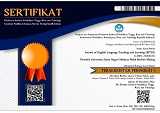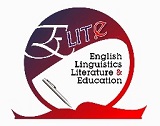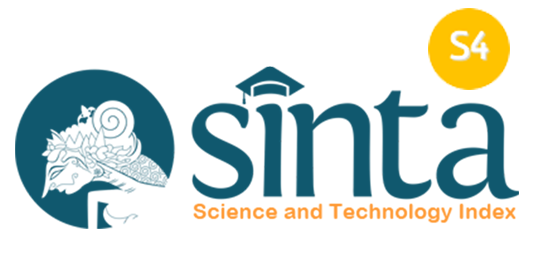Using CLIL-Based English Materials Development for Business and Marketing in Vocational High School
Abstract
Keywords
Full Text:
PDFReferences
Akbar, A. A. N. M., & Gunadi, S. (2018). The current learning competences of English for vocational high school graduates: Do they really cater for the real life professional needs? The International English Language Teachers and Lecturers (INELTAL) Conference 2018, 189–194. http://ineltal.um.ac.id/wp-content/uploads/2019/03/Ayu-Alif-Nur-Maharani-Akbar-page-189-194.pdf
Ball, P. (2020). Language, concepts and procedures: Why CLIL does them better! Onestopenglish. https://www.onestopenglish.com/clil/article-language-concepts-and-procedures-why-clil-does-them-better/500731.article
Bentley, K. (2007). Teaching science through English—CLIL approach. CUP.
Calviño, M. A. M. (2012). Content and language integrated learning. Tlatemoani: revista académica de investigación, 9, 7.
Coyle, D., Hood, P., & Marsh, D. (2010). Content and language integrated learning. Cambridge University Press. https://abdn.pure.elsevier.com/en/publications/content-and-language-integrated-learning
Egan, A., Maguire, R., Christophers, L., & Rooney, B. (2017). Developing creativity in higher education for 21st century learners: A protocol for a scoping review. International Journal of Educational Research, 82, 21–27. https://doi.org/10.1016/j.ijer.2016.12.004
Graaff, R. de, Koopman, G. J., Anikina, Y., & Westhoff, G. (2007). An observation tool for effective L2 pedagogy in content and language integrated learning (CLIL). International Journal of Bilingual Education and Bilingualism, 10(5), 603.
Indonesian Ministry of Education. (2016). Decree of Indonesian Ministry of Education Core Competencies and Basic Competencies of Lessons in the 2013 Curriculum. Number: 24.
Lorenzo, F., Casal, S., & Moore, P. (2010). The effects of content and language integrated learning in European education: Key findings from the Andalusian bilingual sections evaluation project. Applied Linguistics, 31(3), 418–442. https://doi.org/10.1093/applin/amp041
Marsh, D. (2002). CLIL/EMILE: The European dimension : actions, trends and foresight potential. UniCOM, Continuing Education Centre.
Moore, P., & Lorenzo, F. (2007). Adapting authentic materials for CLIL classrooms. CLIL Special Issue, 16(3), 28–35.
Morton, T. (2016). Conceptualizing and investigating teachers’ knowledge for integrating content and language in content-based instruction. Journal of Immersion and Content-Based Language Education, 4(2), 144–167. https://doi.org/10.1075/jicb.4.2.01mor
Navés, T. (2009). Effective content and language integrated learning (CLIL) programmes. Content and Language Integrated Learning: Evidence from Research in Europe, 22–40.
Paul, R., & Elder, L. (2008). Critical thinking: The nuts and bolts of education. Optometric Education, 33(3), 88–91.
Pérez, M. L., & Malagón, C. G. (2017). Creating materials with ICT for CLIL lessons: A didactic proposal. Procedia - Social and Behavioral Sciences, 237, 633–637. https://doi.org/10.1016/j.sbspro.2017.02.029
Prasetianto, M. (2014). CLIL: Suggested English materials for curriculum 2013. Language Circle: Journal of Language and Literature, 8(2), Article 2. https://doi.org/10.15294/lc.v8i2.3019
Rahayuningsih, D. (2016). Student teachers’ challenges in developing teaching materials during teaching practicum in vocational school. Journal of English and Education, 4(2), 24–34.
Robinson, P. C. (1996). ESP today: A practitioner’s guide (Nachdr.). Prentice Hall.
Widodo, H. P. (2016). Teaching English for specific purposes (ESP): English for vocational purposes (EVP). In W. A. Renandya & H. P. Widodo (Eds.), English Language Teaching Today: Linking Theory and Practice (pp. 277–291). Springer International Publishing. https://doi.org/10.1007/978-3-319-38834-2_19
DOI: https://doi.org/10.18860/jetle.v3i2.15646
Refbacks
- There are currently no refbacks.
Jalan Gajayana 50 Malang 65144, Jawa Timur, Indonesia

This work is licensed under a Creative Commons Attribution-ShareAlike 4.0 International License.
Indexed by





